Review: Two explorations of the power and prominence of Latino art: ‘Anna Maria Maiolino’ and ‘Carlos Almaraz’
- Share via
Two artists’ retrospective exhibitions, one at the
That’s fitting for Los Angeles, given the Latino plurality of the population that emerged for California three years ago. L.A. is now one of the great cities of Latin America, and PST: L.A./L.A. ranks as a significant cultural marker of the change. The usual East-West conversation flips to North-South.
Although the formal opening is about a week away, 13 PST exhibitions have already opened. At LACMA, “Playing With Fire: Paintings by Carlos Almaraz” looks at the late, L.A.-based Chicano artist whose theatrical images of blazing car crashes on freeway overpasses grabbed considerable attention in the early 1980s. At
FULL COVERAGE: Fall 2017 Arts preview »
Both are solid if not major artists whose work deserves the platform for enjoyment and serious study that they are now receiving. If Maiolino’s absorbing show is the more compelling of the two, it is partly because Almaraz’s work, shown regularly in Los Angeles (including at LACMA), is more familiar.
Maiolino was born in southern Italy, near the instep of the boot, to an Italian father and an Ecuadoran mother. Like many, the family struggled with the hardships of postwar Europe. They immigrated to Venezuela in 1954, when she was 12, moving on to Rio de Janeiro six years later.
Youthful privation may be one reason that food is a leitmotif running through Maiolino’s disparate work. For “The Monument to Hunger” (1978), a bag of white rice is wedded to a bag of black beans, held together with a mournful black satin ribbon and set on a pedestal draped in elegant black lace. It’s a shrine to desperation, love and hope, if hunger is acknowledged as profound yearning.
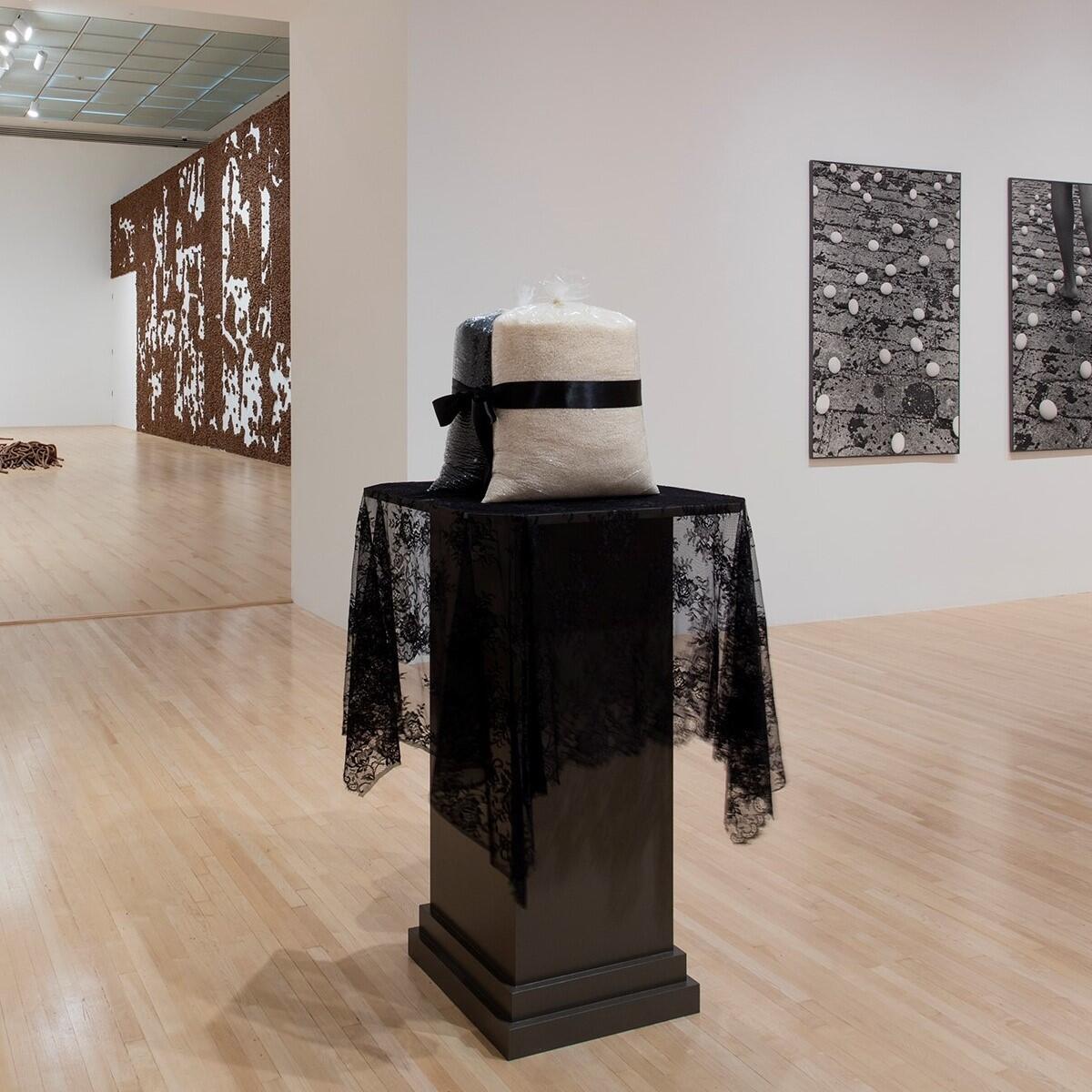
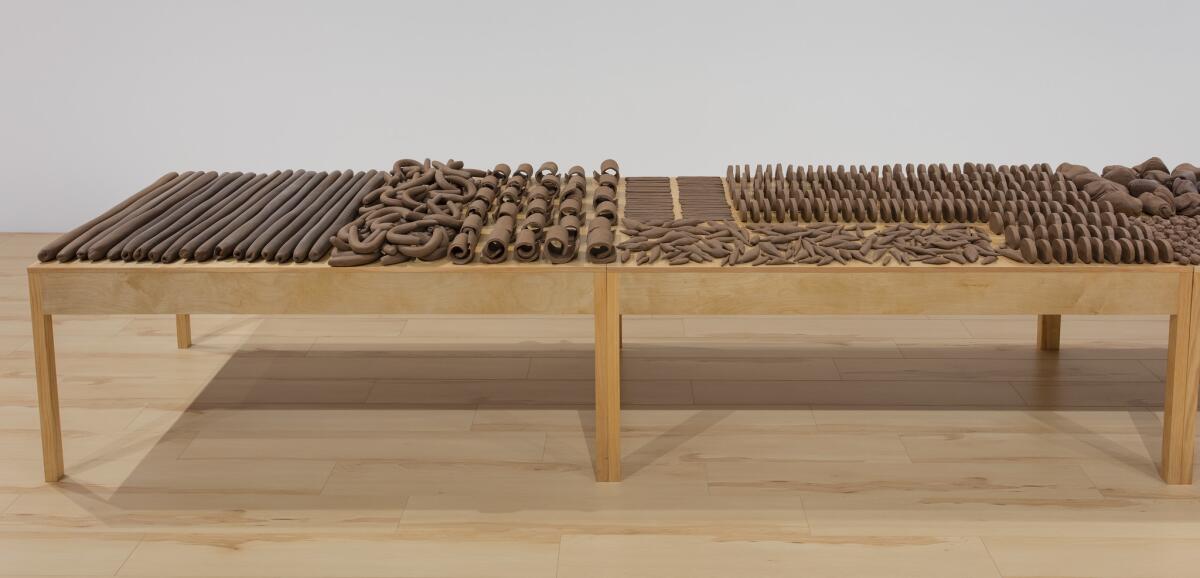
A centerpiece of the exhibition, which was organized by MOCA chief curator Helen Molesworth and research assistant Bryan Barcena, is a room-size installation with four big tables placed end to end, their tops lined with row upon row of clay forms suggestive of loaves of bread, sausages, cookies, pasta, pastry and such.
Each form is repeated 10, 20, 30 times or more — a Minimalist construction that here assumes the proportion of ritual repetition. On altar-like tables, Maiolino lays out a common fact of women’s traditional work. The daily labor of preparing food is elevated to an austere, unembellished, ceremonial place.
These tabletop “foodstuffs” are composed from unfired clay. So is the long, skinny heap of coiled clay that snakes along the floor adjacent to the tables, suggesting a slithering serpent. The wall nearby is covered in chicken wire studded with hundreds, maybe thousands of balls of clay, each sporting an indentation made as an emphatic thumbprint.
The clay, because it is unfired, will slowly dry out, crack and fall apart over the course of the exhibition’s run. Time is among her sculptural materials. Ashes to ashes, dust to dust. Maiolino enchants with a secular variety of religious faith: Take, eat; this is my body.
The artist began as a printmaker, methods she learned at Brazil’s National School of Fine Arts. One of the most surprising works is an unassuming if tactile, richly printed woodcut made in 1966. A veiled self-portrait, “Anna” features two silhouetted figures, side by side, their mouths agape. A single speech bubble joins the two orifices, speaking her name.
Not unlike Bruce Nauman, the artist who has most fully explored (and exploited) for conceptual ends the physical properties of the medium, Maiolino uses the printmaking process as a subject for her work. When an artist makes a print, an image is mirrored — doubled in reverse. In “Anna” the process speaks her name, art calling the artist into being.
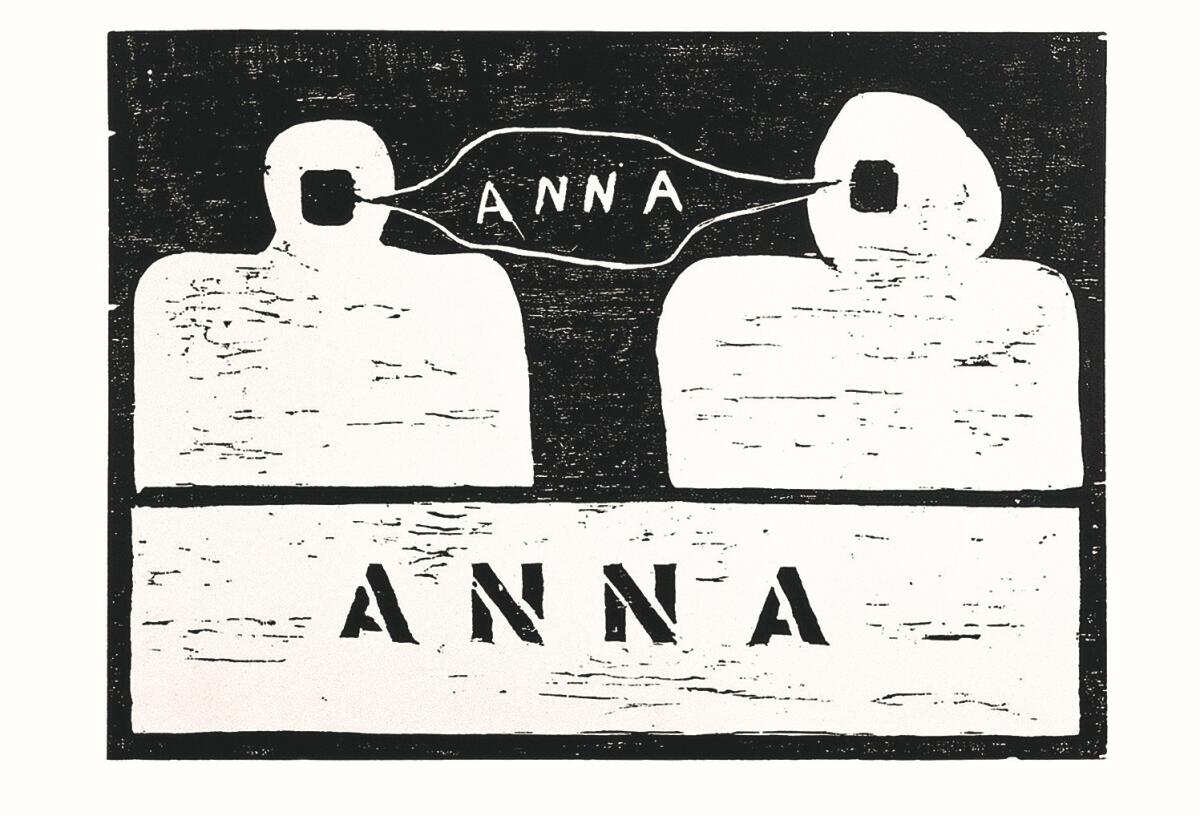

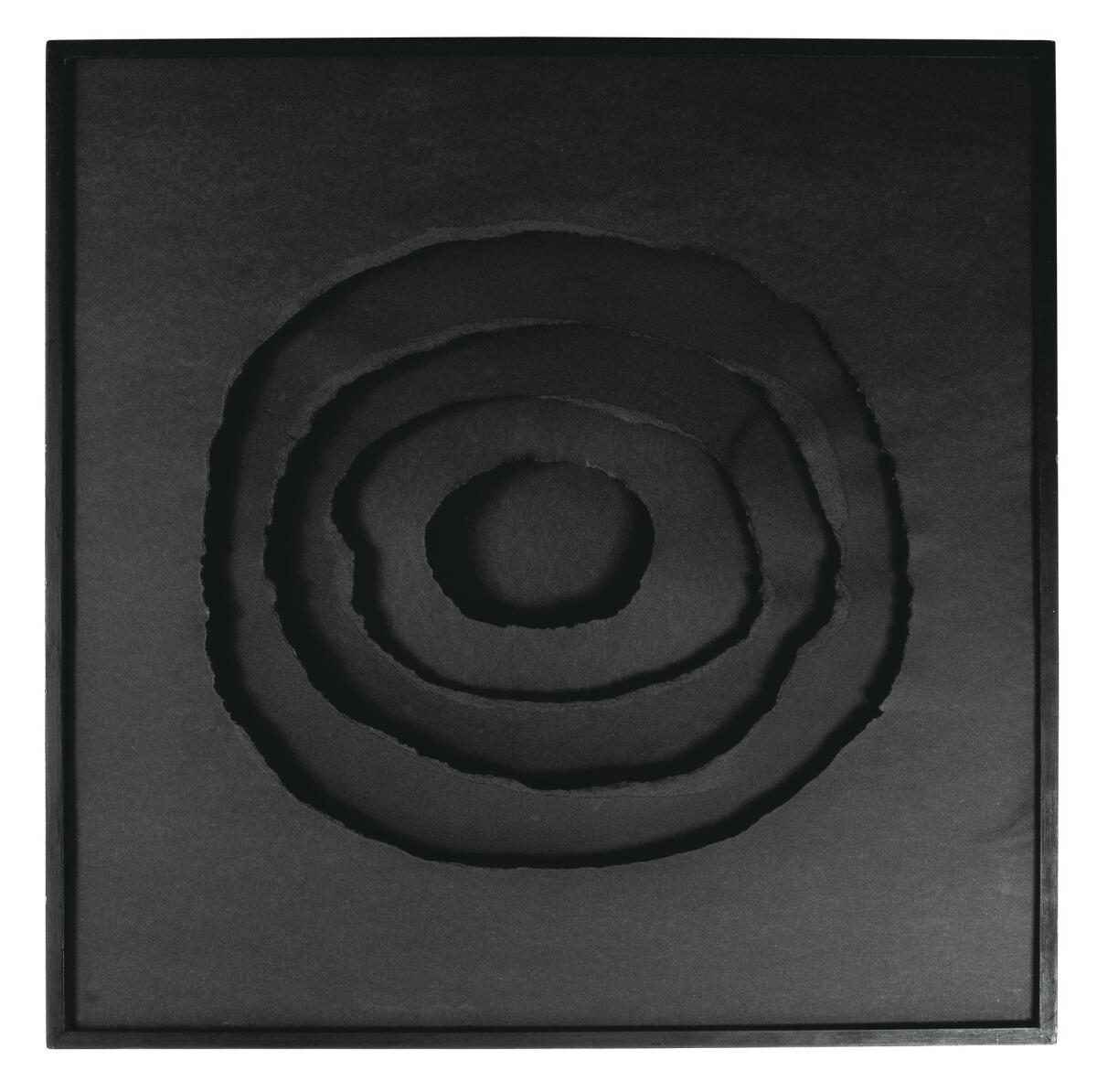
Maiolino is best known as a sculptor. (Several cast-cement sculptures were included in “Revolution in the Making: Abstract Sculpture by Women, 1947-2016,” the inaugural exhibition last year at Hauser & Wirth’s Los Angeles gallery and — as far as I can tell — her L.A. debut.) Yet her works on paper comprise her most sustained body of work, perhaps because she approaches most of them in a sculptural way.
They’re more works of paper than on it, often layered and displayed in shadow boxes. Maiolino carefully tore circles and elegantly ripped ovals into multiple layers of thick construction paper. Sometimes she split the sheet in two before delicately sewing the gashes back together. Her abstractions seem wounded.
In the face of dangerous waves of political repression buffeting postwar Brazil, geometric abstraction edged out figurative art as a means for registering resistance and opposition. It was stubbornly vanguard, but geometry didn’t carry the narrative risks that frankly figurative art did.
In a sense, it was a means for speaking in code. Yet a nagging problem remained. Geometric abstraction’s emphasis on art’s concrete properties traced its origins to prewar Europe, especially Constructivist and De Stijl paintings and sculptures. For Brazilian artists, a colonialist element lingered.
Maiolino’s tearing and suturing took on a subtle but inescapably political character. On one hand, she was ripping up a colonial legacy, her layered holes identifying a deep void at the core of the work. On the other, that void often feels uncannily full of potential life.
Over at LACMA, Carlos Almaraz’s paintings couldn’t be more different — and not simply because they are figurative. Vibrant color is mostly missing in action from Maiolino’s work, where neutrals dominate. For Almaraz, color is an essential tool.
The irrational seduction of opulent, often concentrated pigment is a driver. Part of an international return to sensuous figurative painting in the late 1970s and ’80s, the canvases were born of a specific Chicano history merged with personal narrative.
As a child Almaraz emigrated with his family from Mexico City to the United States, first to Chicago and then Los Angeles. He studied art at several schools, ultimately earning a master’s degree from what is now Otis College of Art and Design. In the 1970s, he engaged in the cultural affirmations of Chicanismo, making murals and banners for César Chávez and the United Farmworkers Union and working with dramatist Luis Valdez.
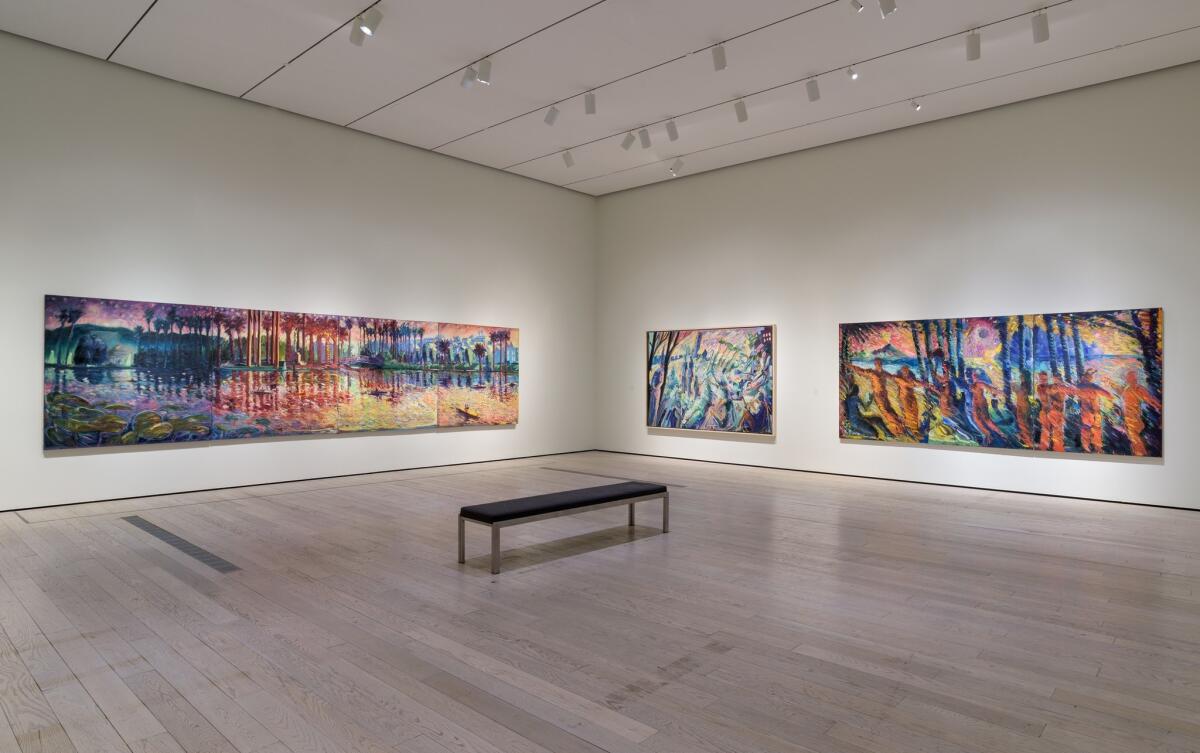
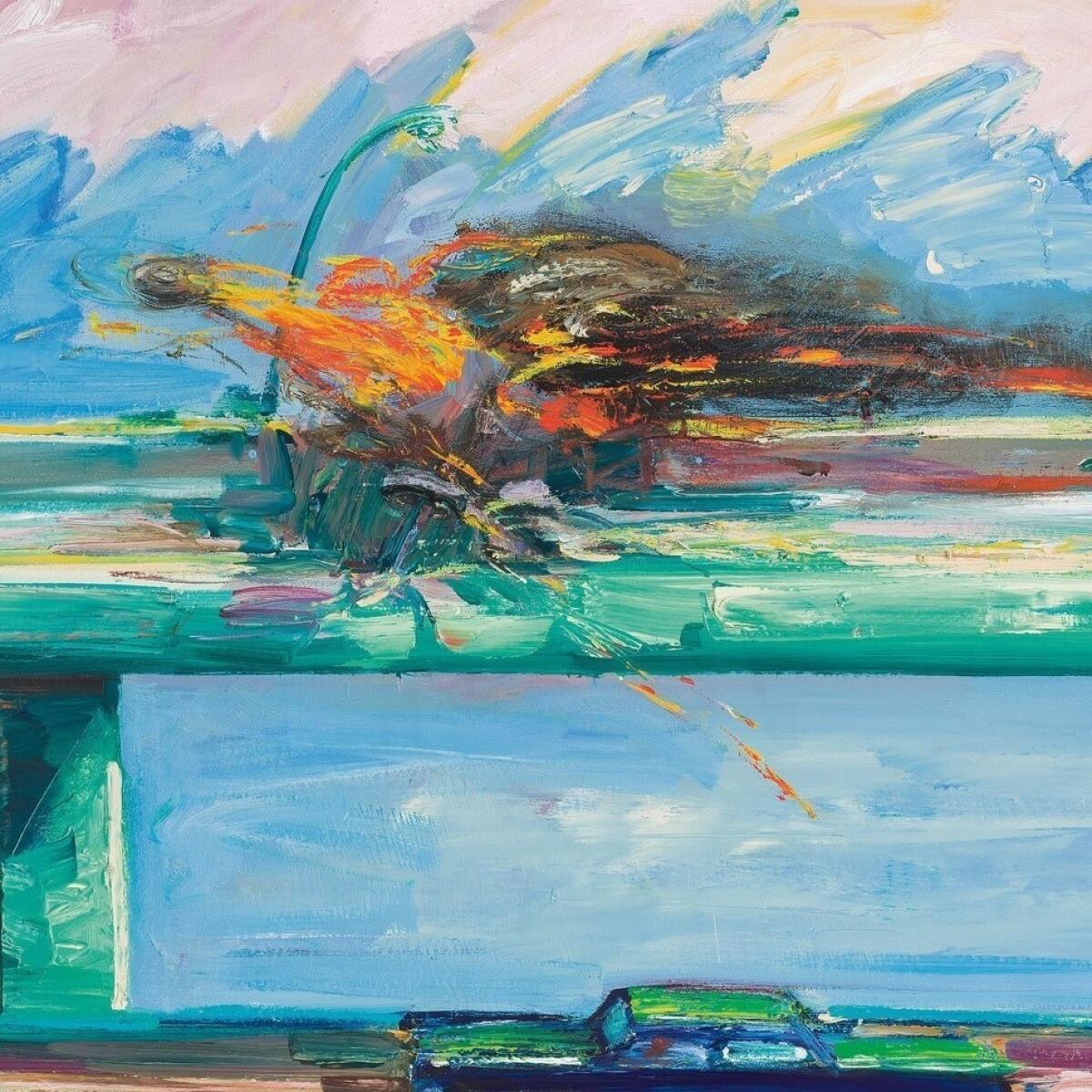
The show, organized by guest curator Howard Fox, is focused on intense years between 1982 and ’88 when Almaraz went all-out in a Neo-Expressionist vein. (He died in 1989 at 48, struck down in the AIDS pandemic.) The artist may or may not have regarded his work as Neo-Expressionist, but the paintings’ phenomenal reception in the 1980s was framed by the hubbub surrounding it.
Installed thematically, the galleries include delirious landscapes, quiet domestic scenes, hallucinatory dream images and cross-cultural allegories from ancient Greece and Mesoamerica. The finest works are the well-known car crash paintings. In these highly theatrical extravaganzas, the largest 6 feet wide, automobiles enact an almost ritual dance of flaming, fiery death on the elevated stage of L.A.’s freeway system.
Riotous oil colors are thickly applied, glistening in the light. Painted wet on wet, pigments are mixed not on the palette so much as on the canvas. Brushy surfaces, their vivid hues sometimes dragged across nearly the entire width of the canvas in slashing marks, pirouetting here and cascading there, are as much performances as the scenes that the animated brushstrokes describe. Almaraz is an artist-actor, and all the world’s a stage for painting.
The flaming subject builds on Andy Warhol’s Death and Disaster series of the 1960s, years when Almaraz was unsuccessfully trying to make a go of it as a young artist in New York. Warhol screen-printed tabloid newspaper photographs of automobile crack-ups as dramatic emblems of the speeding demise of

Almaraz piled on. Reckless derring-do seamlessly merges with the established narrative theme of L.A. car culture. Enhanced with vibrant sunset colors, it’s draped in an epic Mesoamerican mythos, as if formidable jaguar-gods are on the prowl.
Neo-Expressionism emerged in the 1980s — and Almaraz with it — as an urgent, international effort to reassert the legitimacy of painting. The medium had faltered in the wake of sober Minimalist, Conceptual, video and performance art, which dominated the prior decade. Those forms’ inherent theatricality drove the painterly baroque language applied in Neo-Expressionism.
Oddly, the term appears nowhere among the show’s didactic materials, including the catalog. (Elsa Flores, Almaraz’s widow, provides welcome biography, including frank mention of the artist’s childhood sexual abuse, first at the hands of a family member and then a Catholic priest, as well as subsequent struggles with alcoholism.) “Major museums generally pretend Neo-Expressionism never existed,” the critic Raphael Rubinstein once noted, and the absence here does Almaraz no favors.
For a retrospective, the selection is also strangely weighted: All but four of the 49 canvases are from the Neo-Expressionist heyday of the 1980s. The previous 20 years are mostly represented by vitrines with sketchbooks and ephemera.
One undercurrent that emerges from the Almaraz and Maiolino retrospectives is the artists’ status as immigrants. Art, at least in part, is a means for creating a place to be.
Another is the machismo of Latin American and Latino societies. For Almaraz it played out in repressions around his bisexuality. For Maiolino, confinement within domestic roles interceded.
It registers in both artists work, but perhaps the cleverest direct example is a short, grainy, Super-8 film in which Maiolino seated two men in business attire on opposite sides of a round table. They roll an egg back and forth between them, as if playing some weird form of competitive table-hockey with a fragile ovum.
The game never ends. Instead, the men concentrate and hunker down, grinning and plotting their absurdist moves until, finally, the film just runs out.
This story is part of our Fall 2017 arts preview. See our complete coverage here.
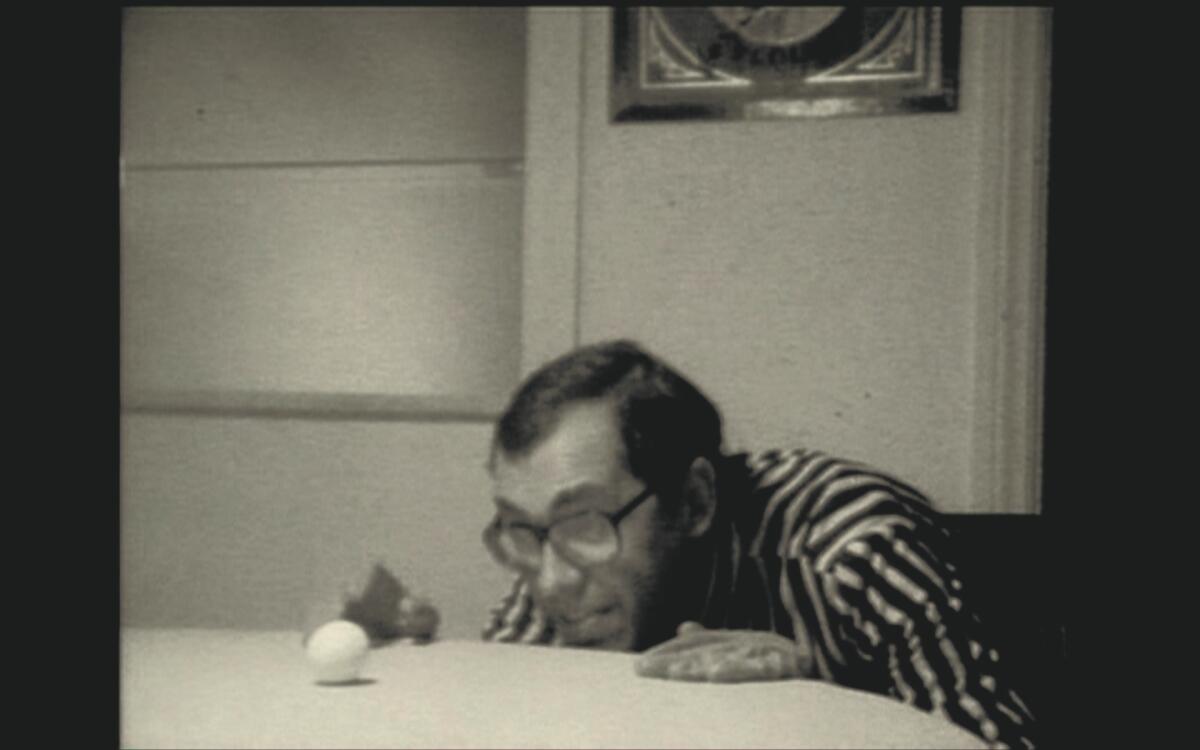
♦ ♦ ♦ ♦ ♦ ♦ ♦ ♦ ♦ ♦
‘Anna Maria Maiolino’
Where: Museum of Contemporary Art, 250 S. Grand Ave., L.A.
When: Through Dec. 31; closed Tuesdays
Info: (213) 626-6222, www.moca.org
‘Playing With Fire: Paintings by Carlos Almaraz’
Where: Los Angeles County Museum of Art, 5905 Wilshire Blvd., L.A.
When: Through Dec. 3; closed Wednesdays
Info: (323) 857-6000, www.lacma.org
Twitter: @KnightLAT
The biggest entertainment stories
Get our big stories about Hollywood, film, television, music, arts, culture and more right in your inbox as soon as they publish.
You may occasionally receive promotional content from the Los Angeles Times.








